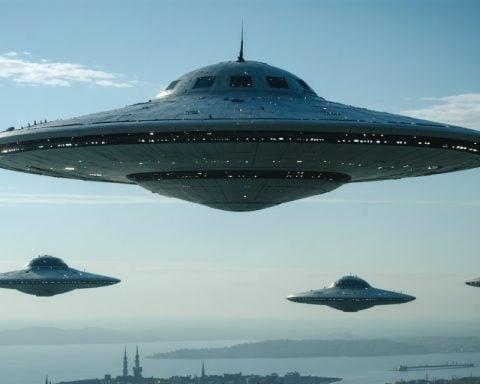Exploring Extraterrestrial Life Beyond Earth
The age-old quest to find extraterrestrial life has predominantly centered around Earth-like planets. However, recent insights suggest that alien life forms might possess the ability to create self-sustaining environments, diverging from our traditional assumptions.
Robin Wordsworth, a professor at Harvard specializing in Earth and planetary sciences, sheds light on this intriguing possibility. Currently, Earth is our sole reference point for life, making extrapolation essential in understanding extraterrestrial conditions. Traditionally, the search for life has prioritized planets that can maintain liquid water and experience geological processes.
Yet, Wordsworth advocates for a revolutionary perspective, examining whether life itself could establish the necessary conditions for survival on varied planets. Interactions between life and its environment have constantly shaped Earth’s physical characteristics, such as the rise of oxygen and human influence on ecosystems.
One significant argument is that the complex chemistry of water, while crucial, does not exclusively govern life’s potential in the universe. The study explores biomaterials like bioplastics and calcite, showing their capacity to develop habitats even in low-gravity environments.
This groundbreaking research suggests that if life can effectively manage temperature and energy resources, it might thrive independently of traditional planetary constraints. As humanity ventures deeper into space, these findings highlight the necessity of sustainable living and introduce a broader approach to identifying potential signs of life beyond Earth.
Revolutionizing the Search for Extraterrestrial Life
Exploring Extraterrestrial Life Beyond Earth
The quest for extraterrestrial life has long been a focus of scientific inquiry, typically centered on planets that mirror Earth’s conditions. However, recent revelations open up new avenues for understanding how life might exist in diverse and unexpected environments.
Innovative Perspectives on Life’s Conditions
Robin Wordsworth, a prominent figure in Earth and planetary sciences at Harvard University, advocates for a paradigm shift in how we search for alien life. He suggests that rather than solely targeting Earth-like planets, scientists should consider the possibility that life forms could actively curate their environments, creating conditions that sustain life independently of commonly accepted standards.
Traditionally, the search for extraterrestrial life has focused on finding planets capable of retaining liquid water and exhibiting geological activity. This narrow approach limits our understanding and exploration of genuinely unique worlds.
Life as an Environmental Engineer
Wordsworth emphasizes that life on Earth has constantly interacted with its surroundings, significantly modifying the planet’s characteristics over billions of years. One example is the atmospheric changes brought about by photosynthesis, which led to the rise of oxygen.
Recent studies suggest that if organisms can maintain thermal balance and access energy, they may establish sustainable ecosystems in diverse conditions. This means the presence of water, while important, may not be the sole determining factor in the search for life elsewhere.
Emerging Biomaterials and Unique Habitats
Research into biomaterials like bioplastics and minerals such as calcite evidences life’s potential to thrive in environments that were once deemed hostile. These substances can form habitats even under low-gravity conditions, hinting at the resilience of life beyond Earth.
This research presents significant implications for future space missions, urging scientists to expand their criteria for identifying habitable environments. Instead of strictly identifying Earth-like worlds, the search could benefit from including a variety of planetary bodies where life might exist in unexpected forms.
Sustainability and Future Explorations
As humanity pushes further into the cosmos, the findings also underline the importance of sustainable living. By understanding how life can manipulate its surroundings, we can better prepare for the challenges posed by space exploration, including the necessity for self-sustaining habitats for astronauts and potential colonies.
Furthermore, these insights bring a proactive approach to detecting life: focusing on biosignatures and environmental modifications indicative of living processes rather than merely seeking traditional markers such as liquid water.
Looking Ahead: Trends and Predictions
The implications of this research extend beyond theoretical discussions. They set the stage for a more comprehensive understanding of life’s potential variability across the universe. As technology and exploration methods continue to advance, the search for extraterrestrial life may yield breakthroughs that redefine our understanding of biology itself.
Conclusion
As our knowledge of potential life forms evolves, so too must our search methodologies. By embracing a broader view of what constitutes a habitable environment, scientists can expand their exploration strategies, paving the way for exciting discoveries in the vast expanse of space. For more on space exploration and extraterrestrial life, visit NASA.



















